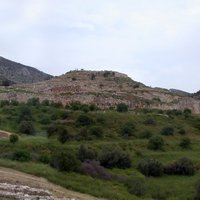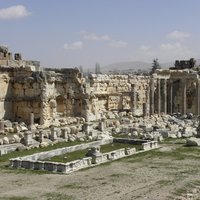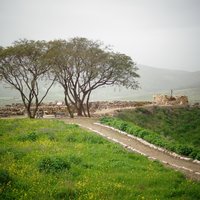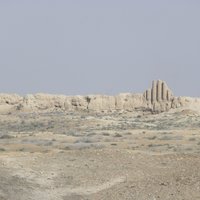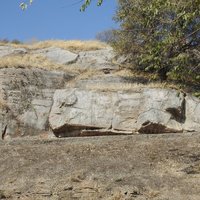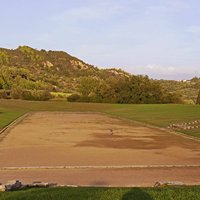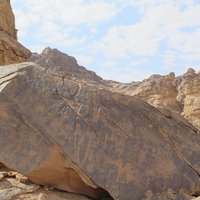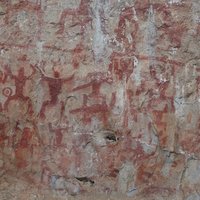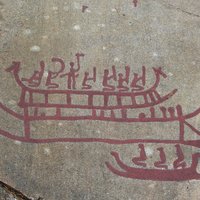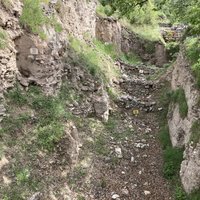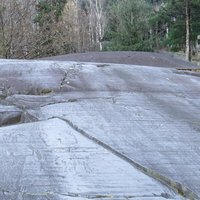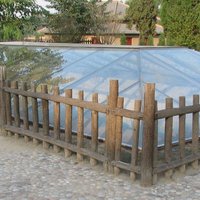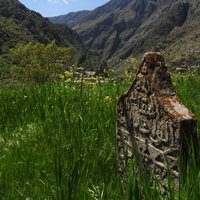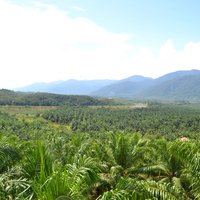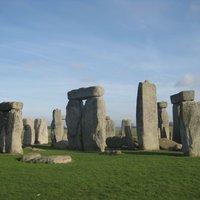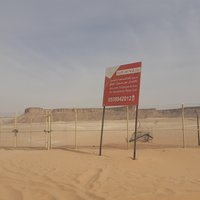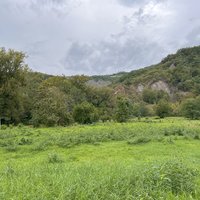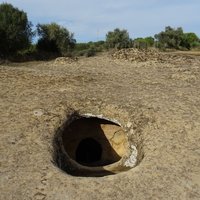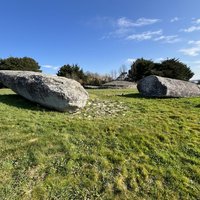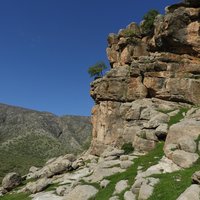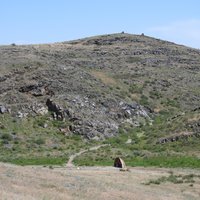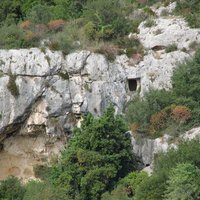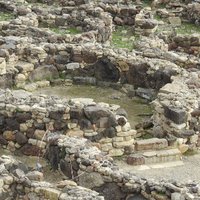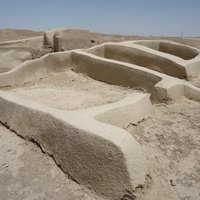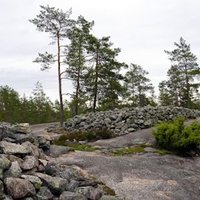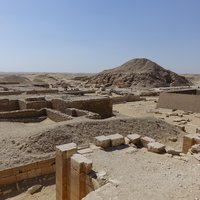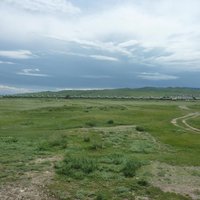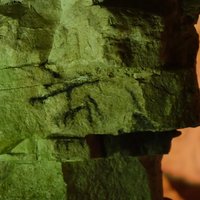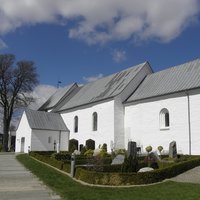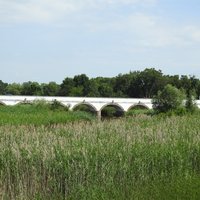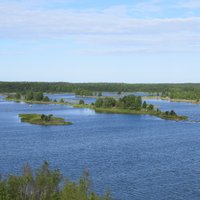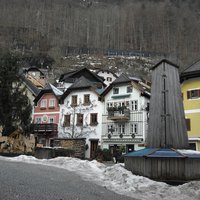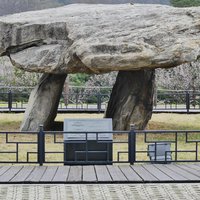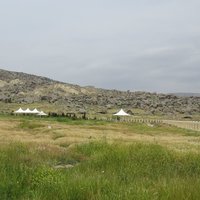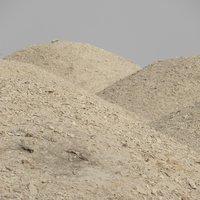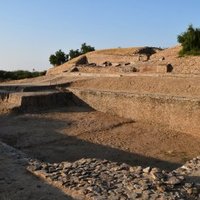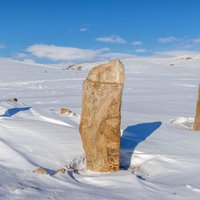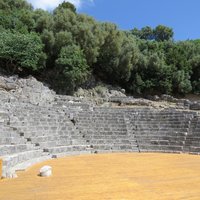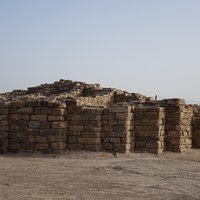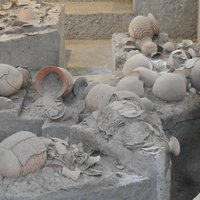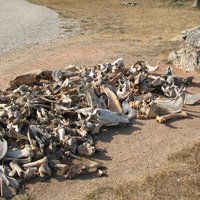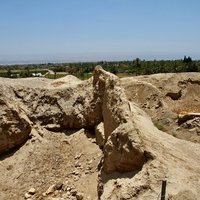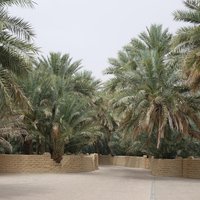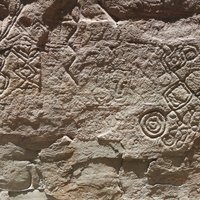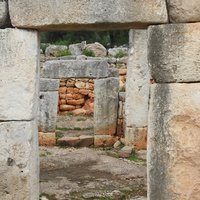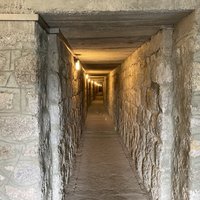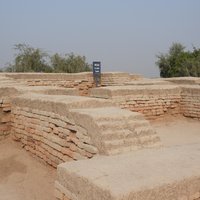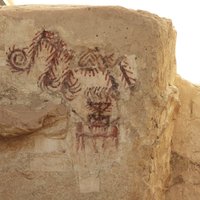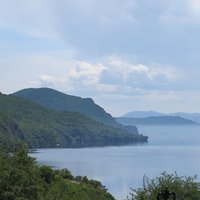Connected Sites
-
Mycenae
-
Excavations near the Jupiter temple have revealed the existence of ancient human habitation dating to the Early Bronze Age (2900-2300 BC)
-
Criti iii: "The three tels are a testimony to a civilization that has disappeared - that of the Cananean cities of the Bronze Age" (OUV)
-
Five early settlements have been uncovered
-
Bronze Age settlement
-
Large compositions appear within this period (AB ev)
-
Crit iii: "Settlements and necropolises from the Bronze Age have been unearthed along the banks of the Alpheios river." (OUV)
-
"(...) the occupants remained and adapted to the arid conditions they faced. This is well reflected in the late Neolithic, Chalcolithic and Bronze Age rock art." – "The record commences with a massive component of Neolithic artwork, followed by comprehensive Chalcolithic, Bronze Age, Iron Age and Historic traditions, all of which used the same localities to create their respective art corpora." (AB Ev)
-
"(...) the bronze drum, sheep-horn bell, bell, blade, sword and other objects in the pictographs proved that the society had entered into the Bronze Age." - "(...) the rock art bears a unique testimony to Luoyue people's belief system and social life, and are outstanding examples of rock art from the late Bronze Age to the early Iron Age." (Nomination file, p. 187, 224)
-
"On Stora alvaret there is a series of large Bronze Age burial cairns"
-
Crit i: "an outstanding example of Bronze Age art of the highest quality." (OUV)
-
"a major archaeological site that vividly illustrates the meeting of Near Eastern and Mediterranean cultures in the Early Bronze Age." (AB ev)
-
"During the Bronze Age (2nd millennium BC, approximately), engravings on rock outcrops took on the issue of weapons,.." (wiki)
See en.wikipedia.org
-
Chinese Bronze Age
-
Central-Eastern Valley: "The earliest archaeological findings show than man settlements in these area date back to the late Bronze and Iron Ages." (Nomination file, p. 102)
-
occupation of the area particularly during the Palaeolithic era, but also during the Neolithic and Bronze Age periods (crit III)
-
-
"Around 2000 to 1900 BCE, a large number of cairns and tumuli appeared at the western base of Jabal Tuwayq, testifying to the second major phase of human occupation. The unearthed objects indicate the long-distance connections of the local community with Eastern Arabia and Yemen in the Bronze Age (...)." (AB Ev)
-
"Between the Copper Age and the Early Bronze Age, the human frequentation became more systematic, and changed its aims: the natural cavities, in particular fossil karst springs, were mainly used as burial sites of the communities living in the neighbourhood. These are the cases of Farneto Cave (Gessi Bolognesi) and Tanaccia and Re Tiberio caves (Vena del Gesso Romagnola)" (nom file)
-
"(...) twenty-six component parts , spread across the Italian island of Sardinia, dating from the Middle Neolithic to the Copper Age, up to the dawn of the Bronze Age". (AB Ev)
-
"(...) monuments were often reused, or new funerary structures inserted into the older ones. New forms of tombs developed in the Bronze Age." (AB Ev)
-
Kaldar Cave: "Further excavation of the wider area revealed five layers of deposit, dating from the Islamic and Historical eras, Iron Age, Bronze Age, Chalcolithic, Neolithic, as well as the Upper and Early Upper Palaeolithic, and Middle Palaeolithic periods." – "A test pit at Ghamari Cave revealed five levels of deposits covering the Middle and Upper Palaeolithic, Neolithic, Chalcolithic, Bronze Age and Islamic periods." – "In front of the Gilvaran Cave, a sondage pit testifies to the existence of a multi-layered agricultural society dating to the Islamic, Bronze Age, Chalcolithic and Neolithic periods." (AB Ev)
-
"a substantial testimony to the lives and beliefs of pastoral peoples of the central Asian steppes from the Bronze Age to the present day." (OUV)
-
"The archaeological explorations of the square in front of the Cathedral have shown that this location was the site of cults in honour of unknown divinities in the Ancient Bronze Age, where the Corinthian Oikos was received, the official cult location with which the founding of the city was sanctioned." (Nomination file, p. 135)
-
Crit iii: "The Su Nuraxi di Barumini bears exceptional testimony to the Bronze Age civilisation of Sardinia" (OUV)
-
Located at the junction of Bronze Age trade routes (AB ev)
-
"Later, particularly in the Bronze Age, Sarazm complemented and extended its activities with metallurgy and handicrafts, demonstrating the existence of a network of a diversity of interchanges on a very large scale" (unesco)
-
Crit iv: "The Sammallahdenmäki cemetery is an outstanding example of Bronze Age funerary practices in Scandinavia." (OUV)
-
The "Old Kingdom" was Egypt's "Bronze age" civilisation
-
Prehistoric Pile Dwellings
Austria, France, Germany, Italy, Slovenia, SwitzerlandInscribed: 201125817Crit iv: "The waterlogged conditions have preserved organic matter that contributes in an outstanding way to our understanding of significant changes in the Neolithic and Bronze Age history of Europe" (OUV) -
Ornated graves
-
"It provides unparalleled evidence for concepts of cultural identity, social and political organization and the development of society and culture in the late Neolithic and early Bronze Age in China and the region" (AB ev)
-
mining sites dating from the Neolithic and the Bronze Age (c. 3900-1600 BCE) (AB ev)
-
"The North mound was constructed over an impressive burial chamber of oak that was cut into an earlier Bronze Age barrow of much smaller dimension." (off description)
-
Early Bronze Age burial mounds (kurgans)
-
Remains were found
-
Crit iv: "Salt production on a major scale can be traced back in Hallstatt to the Middle Bronze Age." (OUV)
-
"Dolmens appear to have arrived in the Korean peninsula with the Bronze Age." (AB ev)
-
The area also holds Bronze Age burial sites (AB ev)
-
"The 21 property components selected for nomination reflect the history of Bahrain throughout the Bronze Age." (Nomination file, p. 64)
-
"Dholavira is an exceptional example of a proto-historic Bronze Age urban settlement pertaining to the Harappan Civilization". (Official description)
-
Bronze Age and Early Iron Age deer stone monuments
-
There are several Bronze Age (2000-500BC) sites in the nominated area, including those at Kalivo, the acropolis of Butrint, and Shën Dimitri. (AB Ev)
-
Crit v: "the necropolis of Bat bears characteristic and unique witness to the evolution of funeral practices during the Early Bronze Age in the peninsula of Oman." (OUV)
-
"In addition to ceramics, the site has exceptional and uniquely early evidence of the knowledge of bronze-making by its inhabitants with remains of raw materials, production facilities, and complete bronze tools and ornaments. These early bronze finds make the site known as the metal tools production site in East and Southeast Asia" (official description at UNESCO website)
-
"The Galería del Silex contains abundant evidence of human occupation during the Neolithic and Bronze Age. More fifty painted and engraved panels have been recorded, with geometrical motifs, hunting scenes, and anthropomorphic and zoomorphic figures." (AB)
-
"The archaeological material from the Bronze Age includes three massive fortified walls constructed in the Early Bronze Age (3000-2350 BCE) and four walls dating to the Middle Bronze Age (1950-1550 BCE) visible in the excavated sections." (AB ev)
-
round tombs of the Hafit culture
-
"These various images and inscriptions are an exceptional demonstration of this long tradition of rock engraving, extending from the Neolithic period through the Bronze Age and up to the Silla period." - AB Evaluation
-
"from the Bronze Age (1600 BCE) to the Late Iron Age (123 BCE)" (AB ev)
-
"Evidence suggests that the first phase of settlement came under the influence of the Hittites during the Late Bronze Age, until the collapse of that Empire, around 1200 BCE." (AB ev)
-
"Once the centre of a powerful civilization, Mohenjo Daro was one of the world's earliest cities — a Bronze Age metropolis boasting flush toilets, as well as a water and waste system to rival modern standards."
See www.cbc.ca
-
Considerable evidence also testifies to the Early Bronze Age period, most prominently identified by the Royal Tomb complex. (official description, Unesco website)
-
Crit i: "encompassing archaeological remains from the Bronze Age up to the Middle Ages" (OUV)
See ohrid.org.mk

